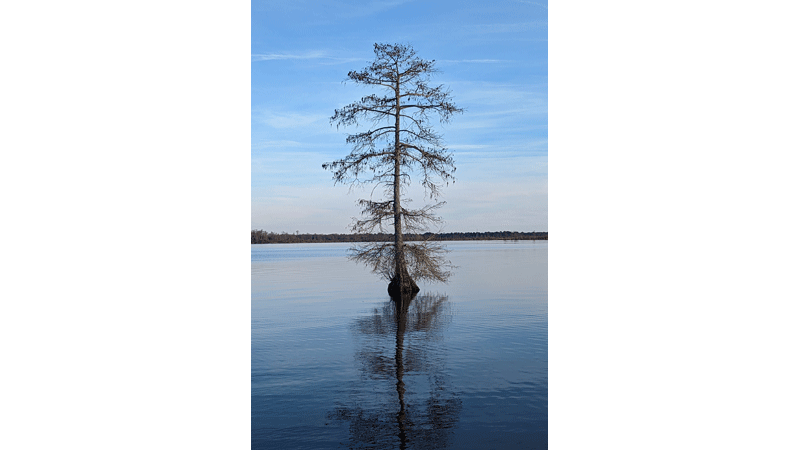Thoughts on a local ecosystem in our backyard: The Great Dismal Swamp
Published 5:36 pm Tuesday, September 5, 2023

- Linda Byrd-Masters highlights the importance of saving the Great Dismal Swamp, which surrounds what she describes as the peaceful yet hauntingly majestic Lake Drummond, pictured above. (Photo submitted by Linda Byrd-Masters)
|
Getting your Trinity Audio player ready...
|
By Linda Byrd-Masters
Virginia Master Naturalist HSS
Recently, I ventured out to what is truly a great and impressive ecosystem that we have right here in our own backyard… the Great Dismal Swamp. I grew up on the edges of its vast surrounding forests in the southern portion of Suffolk and have visited many times over the years. On this particular trip, I bore in mind how important its existence is to so many.
According to the U.S. Fish and Wildlife Service, the GDS is home or refuge for about 47 species of mammals, 200 birds, 96 species of butterflies, and the largest black bear sanctuary on the east coast. It spans a large portion of the Tidewater region and spans the border into both Virginia and North Carolina. Historically, it has been the source of food for local indigenous people and refuge to runaway slaves known as “maroons” in the 1700s to 1800s. With its flooded forests of bald cypress trees and longleaf pines, this beautiful wilderness surrounding the peaceful yet hauntingly majestic Lake Drummond conjures up feelings of awe at how the inhabitants of plants and animals coexist and depend on each other and their environment for their existence.
Yet tragically, the GDS has been reduced to one-fifth of its original 2,200 square miles. Early colonists feared the swamp with its tales of myths and monsters, but it didn’t take long for man to realize the value of its resources. George Washington used slaves to construct ditches (i.e. canals) to access timber and float out the ancient forests of bald cypress trees and white cedar trees, valued for building boats, shingles, etc. for the colonials. Encroaching development over the past two centuries has threatened and encircled, but thankfully the Union Camp Corporation donated about 50,000 acres to the Nature Conservancy, and after purchasing additional land, it was handed over to the federal government and became a protected entity in 1974 as the Great Dismal Swamp National Wildlife Refuge.
Why is it important that we save the GDS? In addition to providing homes and habitats to animals, it also serves as breeding grounds for fish, amphibians and pollinating insects. It provides a benefit to us directly in many ways also. The swamp filters polluting sediments out of groundwater that supplies our local streams and waterways, and the swamp acts like a giant sponge during excessive rainfalls. Hampton Roads has already begun to experience flooding issues from rising ocean levels; imagine if the GDS wasn’t available to handle flooding rains.
We all need to protect not only the GDS, but many other major ecosystems throughout the world (the Great Rainforest, for example). Not only for the wildlife, but for our own existence as well.





